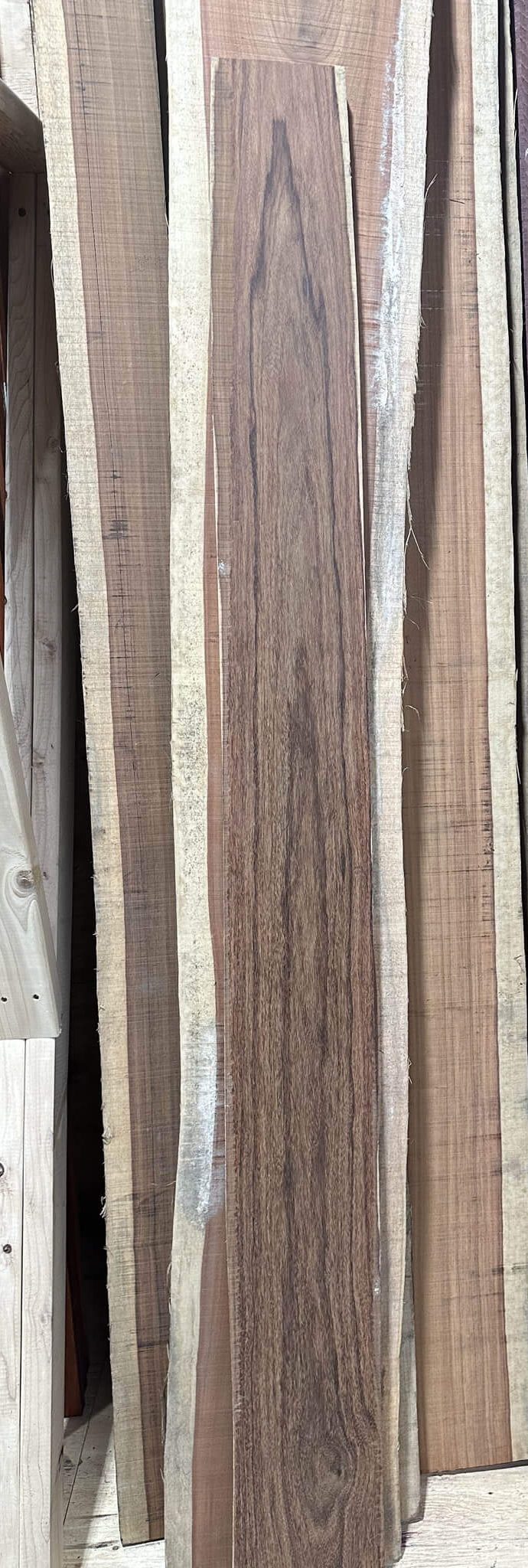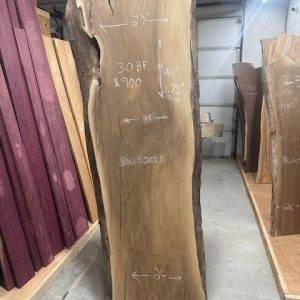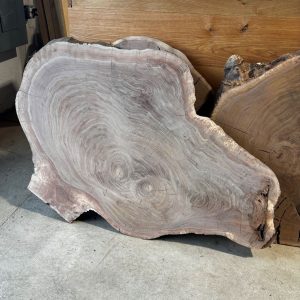Find Your Perfect Wood Product
If you find a product you like, reach out to us for more details and assistance.
Granadillo Slabs (Mexican Rosewood)
Granadillo is an exotic wood that is bright red to reddish or purplish brown, with rather distinct stripes. The sapwood is clearly distinct from the heartwood, and is almost white in color. It is hard and superior to Teak and probably Mahogany. The wood is exceptionally heavy. It weighs much more than Hard maple or Teak in the green or seasoned condition. The density of the wood is very high.
Length: Not specified
Thickness: 8/4
- Common Name(s): Granadillo, Mexican Rosewood
- Scientific Name: Platymiscium spp.
- Distribution: Central America, southern Mexico, and northern South America
- Tree Size: 65-100 ft (20-30 m) tall, 2-3 ft (0.6-1 m) trunk diameter
- Average Dried Weight: 50 lbs/ft³ (800 kg/m³)
- Janka Hardness: 2,210 lbf (9,830 N)
- Crushing Strength: 10,940 lbf/in² (75.5 MPa)
Heartwood: Ranges from reddish-brown to a dark brown with darker streaks.
Sapwood: Pale yellow, clearly demarcated from heartwood.
Grain: Usually straight, but can be irregular or interlocked.
Texture: Fine to medium texture with a good natural luster.
Rated as very durable and resistant to insect attack.
Granadillo can be difficult to work with due to its density and interlocked grain, which can cause tearout during machining. It turns, glues, and finishes well, though its natural oils can sometimes interfere with the glue.
- Fine furniture
- Veneer
- Turned objects
- Musical instruments
- Decorative pieces
- Specialty wood items






Granadillo is prized for its rich color and fine texture, making it a popular choice for high-end woodworking projects. Its high density and hardness give it excellent durability and a distinctive sound quality, which is why it is frequently used in musical instruments.
Note: Granadillo is not listed in the CITES Appendices, but it is still recommended to ensure sustainable sourcing practices are followed to protect the species and its habitat.